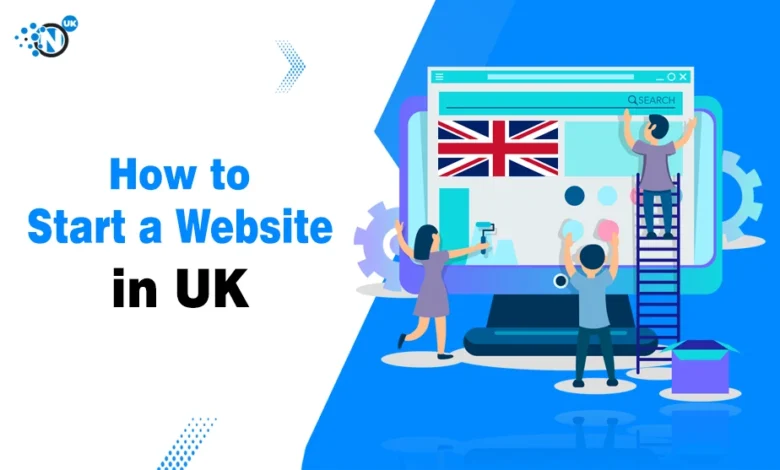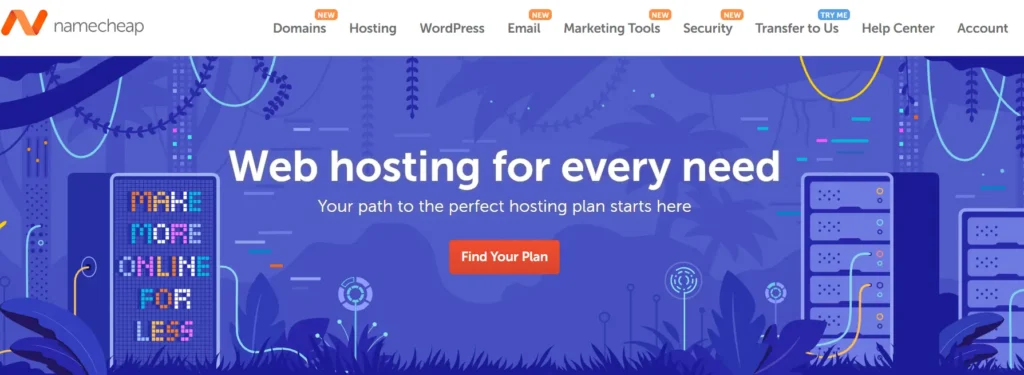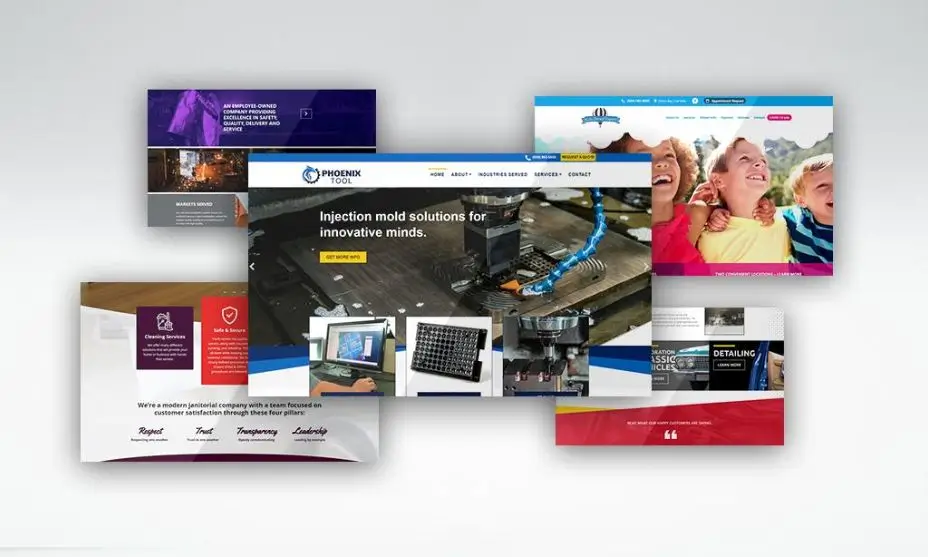How to Start a Website from Scratch in the UK (2024 Guide)

Are you someone who is looking to make a digital presence in the UK region? Then having a website can make things easier for you. Creating a website for your business or personal use can be a major digital achievement to develop a digital presence, but it comes with a number of complexities. Whether you’re a startup in the UK or someone who wants to build an online store, setting up a website can earn you a lot of engagement and establish your official presence online.
With the advancement of technology, creating a website on your own is now a breeze. Even those who don’t have any technical knowledge can now make their own digital platform. This guide will explain a complete step-by-step roadmap on how to start a website from scratch in the UK starting from the name to post-launch support. So, let’s get started!
1. Know What You Need
Before progressing towards how to start a website, it is important to define the purpose or idea that you have in mind. Whether you want to build an online store, a blogging website, or a simple portfolio website, the purpose helps you to choose the stepping stone of the website.
For example, a blogging website is better built on WordPress, and for an ecommerce store, it is recommended to use Shopify. This purpose will influence the design, domain name, and features of your website to represent your digital identity.
2. Choose a Domain Name
The domain name of your website for the UK region would look something like this: www.yourwebsitename.co.uk. You can always go with a .com domain, but its better to choose a domain with.UK in it if you are targeting an audience of the British region. Moreover, such domains with .co.uk or .UK are easier to remember for your targeted audience as it helps to build a local presence. To get a domain name:
- Check the Availability: You can reach out the domain registration sites like Namecheap or GoDaddy to find UK specific domains. Simply type in the name and select .CO.UK or .UK from the domain selection section just like, https://www.nogentech.co.uk/

- Register the Domain: Once you have found your domain, register it as soon as possible before someone else can claim it. If your mentioned domain is already claimed, you can try a different variant by adding a different set of works. A little tip is not to add an underscore or slash in your site name, as it could make it complex for the audience to remember. Keep in mind simplicity is the key.
3. Find the Right Hosting Partner
Finding the right hosting partner is probably one of the most important factors in how to start a website. The web hosting service provider is responsible for storing your website’s files to make them accessible online. There are various reputed web hosting providers in the UK that can cover your needs for maintaining and publishing a website. Here are some types of hosting services that you must know about.
- Shared Hosting: This type of hosting is suitable for beginners and small sites who are new to website creation. Moreover, it’s a budget-friendly option that costs less than other hosting types, and you can get shared hosting in the UK from Namecheap or SiteGround.

- VPS Hosting: VPS hosting gives you better resources and control over the website’s services. This type of hosting is ideal for websites that expect high traffic and cannot afford downtime. With shared hosting, you may have to suffer downtime.
- UK-Based Service Provider: For reliable speed and better support, we recommend any UK-based hosting service provider like UK2.net or Krystal Hosting. For a domestic targeted audience it is best to keep it local so you don’t have to suffer from pinging issues.
4. Find the Right Website Platform
The next step is to choose your website’s control dashboard or, better known as the Content Management System, where you can create or manage your website’s content. This is the factor that depends on what type of website you want, so you can get a website controller that suits your needs the most. Here are some examples of website CMS.
- WordPress: WordPress is the most popular content management system which is popular for its flexibility and plugin integration. Moreover, it is free to use and it’s more suitable for blogging websites.
- Wix and Squarespace: These platforms offer drag-and-drop website builders where you can add all the features like building blocks. Wix and Squarespace are ideal options for beginners who don’t have much technical or coding knowledge, as they offer better customization options compared to WordPress.
- Shopify: Shopify is exclusively designed for e-commerce, and it gives you all the options you need to integrate into an online store. However, it charges a monthly subscription fee for its services that come with different packages.
5. Design and Customize the Website

The next phase in how to start a website is about designing a website and adding pages to display your brand’s image to the audience. Here is what you need to do in this phase.
- Choose the Right Theme: Many platforms offer ready-made templates and customizable themes to make your website look more interactive. You can choose one that suits the best based on your needs.
- Customize Colors and Layouts: While choosing the layout of your website, make sure to go with the colour scheme that matches your brand’s identity or logo. Keep it clean, professional, and eye-catching for your audience.
- Make a Responsive Design: Always keep the user’s persona in mind and craft your website with options and features that are most demanded by the users. A user-friendly design can change the whole experience for you, especially if you are running a service-based website or an online store.
- Add Essential Pages: Besides the main homepage of the website, its important to add essential pages on your website like the Contact Page, About Page, Blog section, and services page.
6. Write Your First Blog

Finally, when the website is in place, it’s time to make it discoverable for the audience. Write your first blog to make your website more relevant in your niche. It’s better to keep it informational for the audience so they can gain value. While writing the content, make sure that you keep it SEO optimized to make it discoverable by the search engines:
- Write relevant blogs on your website with relevant keywords searched by the audience.
- Perform keyword research according to the website niche for adding relevant search terms on your homepage.
- Perform on-page SEO by adding relevant titles, meta descriptions, headers, and meta tags.
- Do link-building by reaching out to relevant blogs and websites that represent your domain.
- Publish content relevant to your niche so your website can have a better authority in its domain.
- Share your content on social media and relevant communities to gain better engagement.
Making your website SEO optimized with relevant content will make it more discoverable for your audience in the UK region. For example, if your website is an online store for selling clothing items, then someone searching for ‘buy T-shirts for summer’ in the UK should be able to discover your website for shopping.
7. Test and Launch
Finally, when your website is developed, you can perform the software quality assurance testing before launching it online. While conducting the SQA of your website, you can hire a tester or check all the elements on your own by going through all the elements on your own.
Once everything is in place, you can double-check your settings and launch the website online. You can always reach out to the domain service provider to get post-launch assistance and support to maintain the website so it doesn’t experience downtime. Also, make sure to perform regular updates to your website for a stable and smooth experience.
8. Maintenance
Post-launch maintenance is very important for a website to keep it up and running all the time. Especially for eCommerce-based businesses in the UK, suffering downtime means losing sales, and you will have to suffer the loss ultimately. Therefore, it’s better to find a hosting service that provides post-launch maintenance package to keep your website up and running at all costs.
Conclusion
Creating a website is a breeze nowadays with the convenience of technology and ready-made platforms that offer reliable options like drag-and-drop building. However, building the website is only half of the part, as maintenance and promotion go a long way for you. With the steps mentioned in this article, you can easily learn how to start a website, even if you have little to no knowledge of technical expertise.
FAQs
How much does it cost to start a website in the UK?
It costs anywhere from £50-£500+ to start a website in the UK. However, the complexity of features and design requirements can make things more complex.
How long does it take to create a website from the start?
It could take anywhere from several weeks to a couple of months to build your website from scratch.
How important is SEO for UK websites?
SEO is vital for visibility in search results, especially for UK-based businesses that rely on local search traffic. UK-specific SEO helps target the right audience and improves search engine rankings.
